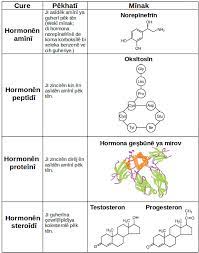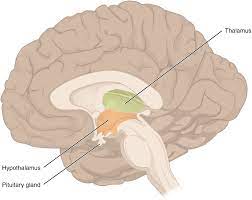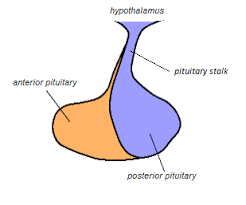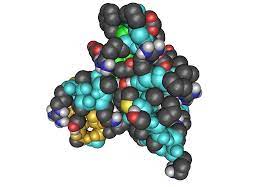What Are The Functions Of Human Growth Hormone?
Video Link: https://vimeo.com/183549351
Video Download: Introduction To Human Growth Hormone
Video Stream: Introduction To Human Growth Hormone

How does Human Growth Hormone Work?
Human Growth Hormone is one of the most critical metabolic hormones secreted by the human body. The hormone itself goes by a few different names.
Somatotropin refers to a naturally occurring Growth Hormone that is present in all animal species. Somatotropin also refers to medically derived HGH that has been gathered from the pituitary gland of cadavers. At first, this was the only way to utilize HGH for medical use.
Today, however, almost all medical Human Growth Hormone is synthetically derived via a process known as Recombinant DNA Technology. Although the process is synthetic, the Human Growth Hormone created from the process is functionally and biologically identical to the Growth Hormone that your Pituitary secretes.
HGH derived from Recombinant DNA Technology is also referred to as Somatropin. Another commonly used term to describe Recombinant HGH is Bio-Identical HGH.
This term both signifies the different origin of this form of HGH while also recognizing that the hormone created in the laboratory is identical to that naturally produced by the body.
Why do they have different names if they are the same thing?
There are a couple of fundamental reasons. First, there are risks involved with Human Growth Hormone derived from carcasses that are not at play when utilizing Bio-Identical Human Growth Hormone, the most significant of which is Krutzfield-Jacobs Disease. Krutzfield-Jacobs Disease is a prion disorder that shares similarities with Alzheimer's disease. In rare cases, HGH harvested from cadavers was tainted with traces of this debilitating disease.
Given the severity of the disease, Harvested HGH for Medical Usage completely ground to a halt, and new techniques to safely create Bio-Identical Human Growth Hormone were invented to fill the void. Today, all Hormone Replacement Therapy is conducted using Bio-Identical HGH, so most people do not differentiate between the two forms in everyday speech.
The second reason the two forms of the hormone are named differently is that the source also matters for legal reasons. Different companies have legal rights to particular forms of Human Growth Hormone.
No company has a legal right to natural Human Growth Hormone, but companies have patents that protect the specific medical techniques they use to synthesize HGH for medical use.
A few most common forms of HGH Hormone Replacement Therapy are Nutropin, Humatrope, Saizen, and Norditropin. Today, Human Growth Hormone is incredibly safe, and none of the pitfalls of early forms of HGH are at play any longer, allowing you to experience the pure effects of the treatment.
How is Human Growth Hormone Composed?
Human Growth Hormone is known as a Peptide Hormone. Peptide hormones are made up of amino acids chained together by peptide bonds. The human body secretes over forty hormones, and they all have unique and vital purposes regarding the proper and optimal function of the body. The primary role of Human Growth Hormone is to encourage optimal cellular metabolism throughout the body.
HGH is also known as a mitogen for this reason. Mitogens are chemicals that encourage the body's cells to reproduce and divide at an increased  rate. Although this sounds like something simple, it is incredibly complex.
rate. Although this sounds like something simple, it is incredibly complex.
HGH affects every system in the body in a unique way. It makes the muscles more prominent, strengthens and hardens the bones, and keeps the immune system running at peak capacity.
Specifically, HGH is a polypeptide hormone comprised of 191 amino acids linked in a specific configuration. Human Growth Hormone weighs 22,124 daltons. A dalton is a unit of molecular weight identical to the molecule's atomic mass. This entire collection of amino acids is linked into one long chain. This chain forms four-helix structures responsible for the cell's proper function.
All animal species on the planet have Growth Hormone. Although all species need Growth Hormone to function, every animal has its unique formulation. Because of these individual differences in structure, the only forms of Growth Hormone that stimulate the human brain are those of humans and sure Old World Monkeys. No other state of Growth Hormone produces any effect on the human brain.
Endogenous Human Growth Hormone is produced only in the pituitary gland by tiny organs known as somatotrophs. The somatotrophs are responsible for manufacturing, storing, and releasing these hormones. The somatotrophs are located on the outside wings of the Pituitary.
There are two genes responsible for the secretion of HGH. These two genes are known as GH-1 and GH-2. The specific location of the Human Growth Hormone genes is on chromosome 17 in regions q22-24.
Although we have described the primary form of Human Growth Hormone above, the pituitary gland produces smaller amounts of slightly different formulations of HGH, which seem to be correlated with specific outside stimuli. Researchers are just beginning to understand the full function of these alternate versions of the HGH Molecule.
How is Human Growth Hormone Regulated?
HGH is primarily controlled by hormones delivered from the hypothalamus. The hypothalamus region responsible for Human Growth Hormone Regulation is the Neurosecretory Nuclei. This structure produces a hormone known as Growth Hormone-Releasing Hormone, abbreviated GH-RH. GH-RH is also referred to in some scientific circles as Somatocrinin.
 The Neurosecretory Nuclei also release a hormone that inhibits the production of Human Growth Hormone known as Somatostatin. Somatostatin is also sometimes referred to as Growth Hormone-Inhibiting Hormone, abbreviated GH-IH.
The Neurosecretory Nuclei also release a hormone that inhibits the production of Human Growth Hormone known as Somatostatin. Somatostatin is also sometimes referred to as Growth Hormone-Inhibiting Hormone, abbreviated GH-IH.
These hormones make their way from the hypothalamus to the Pituitary Gland via a pathway known as the Hypophyseal Portal System. This structure is a series of small blood vessels directly linking the hypothalamus to the Pituitary Gland.
A second hormone that has been shown to increase the production of Human Growth Hormone is Ghrelin, which is a hunger stimulator.
Although the release of Human Growth Hormone by the Pituitary is mainly the result of the interplay of GH-RH and Somatostatin, the release of these hormones is influenced by many different outside circumstances.
Human Growth Hormone Stimulators
The following factors are HGH Stimulators:
Healthy Sleep Human Growth Hormone is primarily secreted during the deepest hours of sleep.
Proper Nutrition Healthy nutrition provides the body with all the equipment it needs to produce HGH properly. Improper nutrition forces the body to choose which systems receive the limited nutrients.
Physical activity The human body secretes significant levels of Human Growth Hormone during vigorous physical exercise.
Human Growth Hormone Inhibitors
The following factors are HGH Inhibitors:
Poor sleep prevents the body from receiving its most significant total dosage of Human Growth Hormone daily.
Sedentary Lifestyle Without healthy exercise, the body does not produce as much Human Growth Hormone as it should.
Excess Fatty Acids High triglycerides and LDL cholesterol levels have decreased the body's ability to synthesize HGH appropriately.
Excess Insulin Production The more Insulin you produce, the less HGH your body will secrete.
Obesity Excess fat limits the body's ability to produce Human Growth Hormone properly.
Stress Abnormally, high-stress levels negatively impact HGH Secretion.
Some uncontrollable factors can impact Human Growth Hormone Production, including gender, heredity, and age.
How is Human Growth Hormone Released?
The Somatotrophs release Human Growth Hormone in pulses when stimulated by the hypothalamus. Giant pulses of Human Growth Hormone Production occur around an hour after falling asleep. During this period, the body releases 13-72 nanograms/milliliter of HGH into the blood plasma. Aside from this significant, primary release of Human Growth Hormone, HGH production is mainly unique to the individual and can change significantly daily.
Almost half of Human Growth Hormone Secretion occurs during deep sleep's 3rd and 4th stages. During waking hours, HGH secretion peaks every three to five hours. When these peaks occur, the window of HGH secretion can be as high as 45 nanograms/milliliter. Between these highs, base Human Growth Hormone remains very low, less than five nanograms/milliliter.
It should be clear based on this data that poor sleeping habits can wreck a person's HGH Levels, negatively impacting their health in numerous ways.
HGH and Aging
Human Growth Hormone Production is distinctly correlated with the aging process. Human Growth Hormone is produced at its highest rates during the teenage growth spurt, peaking and lowering to a certain plateau at the end of puberty. During puberty, HGH secretion can reach as high as 700 micrograms per day. After puberty, adults normally secrete around 400 micrograms per day.
We continue to produce this healthy level of Adult HGH throughout our late teens and twenties. Beginning in the late twenties or early thirties, the pituitary gland starts to produce less and less Human Growth Hormone. The rate at which this decline occurs is generally between one and two percent each year.
List of Biological HGH Stimulators:
GH-RH Growth Hormone-Releasing Hormone binds to GH-RH Receptors in the Pituitary gland.
Sex Hormones Testosterone, Estrogen, and other Sex Hormones encourage the release of HGH. Testosterone has been shown to increase the amplitude of HGH Spikes.
Ghrelin. Ghrelin molecules attach to locations on the Pituitary known as Growth Hormone Secretagogue Receptors.
Healthy Sleep By reaching the deepest phases of sleep, the brain is encouraged to release increased levels of HGH.
Peptide Hormones Certain Peptide Hormones have been shown to increase Human Growth Hormone Production, although these hormones can also affect other systems as well.
Dopamine and Clonidine These hormones encourage the hypothalamus to release GH-RH.
Propranolol and Arginine These two compounds inhibit the secretion of Somatostatins by the hypothalamus.
Hypoglycemia Low Blood Sugar Inhibits Somatostatin Secretion.
Vitamin B3 This vital nutrient is one of the key ingredients which stimulate Natural Growth Hormone Release.
Fasting Because the body increases HGH production as a result of lower blood sugar and increased hunger, fasting encourages the body to release enhanced Levels of Growth hormone.
Vigorous Physical Activity The body releases spikes of HGH to feed the muscles and cardiovascular system in order to encourage the body to function at a higher level.
List of Biological HGH Inhibitors:
Somatostatin. Somatostatin is released by the hypothalamus in order to decrease HGH Production. Some theorize that the hypothalamus begins to produce too much Somatostatin later in life, contributing to Lower Levels of HGH Production with Age.
Growth Hormone and Insulin-like Growth Factor-1 The Hypothalamus increases Somatostatin production when stimulated by HGH and IGF-1 as a form of negative feedback mechanism.
Dihydrotestosterone Although Testosterone increases HGH production; Dihydrotestosterone inhibits Growth Hormone Secretion.
Glucocorticoids, The conversion of Cortisone to Cortisol, inhibits the function of Human Growth Hormone. The reverse is also true.
Hyperglycemia High levels of Insulin production counteract Human Growth Hormone Function.
Certain Medications Many non-biological medicines have an inhibitory effect on HGH Production for various reasons.
The function of Human Growth Hormone
Human Growth Hormone belongs to a large group of hormones known as Anabolic Hormones. Although HGH is not a steroid like Testosterone or Aldosterone, it still stimulates systems throughout the body.
Like most peptide hormones, Human Growth Hormone flows through the body, stimulating target receptors located on the outer barrier of cell structures. The most widely recognized function of Human Growth Hormone is to stimulate the growth spurt associated with puberty.
HGH and Height
There are two ways in which it seems that HGH affects height:
First, Peptide Hormones are fat-insoluble. This means that these hormones cannot break through cellular membranes. Because of this, Human Growth Hormone must attach to receptor sites on cell walls. HGH attaches to cartilage cells, encouraging the reproduction and division of chondrocyte cells. This causes the bones to grow longer.
 The second pathway in which Human Growth Hormone stimulates height is through the creation of IGF-1 via the liver. Most Human Growth Hormone circulates through the body directly to the liver, where it is converted into IGF-1 and other Growth Factors.
The second pathway in which Human Growth Hormone stimulates height is through the creation of IGF-1 via the liver. Most Human Growth Hormone circulates through the body directly to the liver, where it is converted into IGF-1 and other Growth Factors.
IGF-1 encourages the growth and enhanced cell division of tissues throughout the body, encouraging changes in height due to puberty.
IGF-1 encourages organs in the bones known as Osteoblasts to manufacture bone tissue, which directly leads to changes in bone structure. IGF-1 also stimulates chondrocyte activity in a manner similar to HGH.
Why does Human Growth Hormone Increase Height?
HGH is able to cause an adolescent to grow in height because the ends of the bones are still largely made of cartilage. At the end of puberty, growth plates close, preventing the bones from increasing in length. When these plates, also known as Epiphyseal Plates, close, it signals the brain to produce less Human Growth Hormone, leading to the levels that we experience during our late teens and early twenties.
Importance of HGH After Puberty
After puberty, IGF-1 and HGH are responsible for a number of different health functions, including:
Increasing Body Fat Metabolism Human Growth Hormone speeds up the body's rate of burning fat.
Optimizing Bone Mineral Density HGH encourages the healthy maintenance of the bones.
Stimulating Increased Muscle Mass - Human Growth Hormone encourages the muscles to remain stronger and prevent muscle atrophy.
Slowing Down the Rate at which the Body Absorbs Sugar Human Growth Hormone and Insulin work together to regulate blood sugar.
Encouraging the Healthy Function of the Pancreas
Contributing to Hormone Homeostasis Human Growth Hormone belongs to the Hypothalamic-Pituitary Axis. All of these hormones are intricately connected with one another, and optimal Human Growth Hormone function encourages the body to produce normalized levels of other hormones as well.
Strengthening the Immune System Human Growth Hormone encourages white blood cells and other immune system tools to replicate more effectively, encouraging fortified immune health.
Human Growth Hormone for HGH Deficiency
It should be clear at this point that Human Growth Hormone Production is vital to optimal health throughout the lifespan. Although the body normally becomes more sensitive to Human Growth Hormone Production with age, the body still inevitably reaches a point when it does not produce enough HGH to support the body's healthy function.
For many individuals, Human Growth Hormone Replacement Therapy is a viable option to encourage optimal function deeper into the lifespan. If you feel that you may be a candidate for Human Growth Hormone Replacement Therapy, contact us.
Contact us for a FREE, no-obligation discussion about HGH Replacement Therapy
- 0001 What Is Andropause And How Can I Prepare For It? [Last Updated On: October 2nd, 2025] [Originally Added On: February 20th, 2021]
- 0002 Theories On Aging [Last Updated On: October 4th, 2025] [Originally Added On: February 21st, 2021]
- 0003 Sleep And Hgh Go Hand In Hand [Last Updated On: September 30th, 2025] [Originally Added On: February 22nd, 2021]
- 0004 L-carnitine Has The Ability To Preserve Mental Sharpness In The Elderly [Last Updated On: September 29th, 2025] [Originally Added On: February 23rd, 2021]
- 0005 Knowing Two Languages Can Postpone Dementia [Last Updated On: September 28th, 2025] [Originally Added On: February 24th, 2021]
- 0006 Hgh Sleep: Keep Young And Healthy With Deep Sleep [Last Updated On: September 25th, 2025] [Originally Added On: February 26th, 2021]
- 0007 Why Does Human Growth Hormone Production Drop As We Age? [Last Updated On: September 24th, 2025] [Originally Added On: February 27th, 2021]
- 0008 Growing Life Spans And Life Expectancy [Last Updated On: September 23rd, 2025] [Originally Added On: February 28th, 2021]
- 0009 Flax Seed Oil: Longevity And Anti-aging Medicine [Last Updated On: September 22nd, 2025] [Originally Added On: March 1st, 2021]
- 0010 Exercise To Increase Your Hgh Production! [Last Updated On: February 19th, 2025] [Originally Added On: March 2nd, 2021]
- 0011 Eighteen Suggestions For A Longer And Happier Life [Last Updated On: September 21st, 2025] [Originally Added On: March 3rd, 2021]
- 0012 Chemical Pollution Is Destroying Masculinity [Last Updated On: February 19th, 2025] [Originally Added On: March 4th, 2021]
- 0013 Bio-identical Hgh Hormone Replacement Therapy [Last Updated On: September 20th, 2025] [Originally Added On: March 5th, 2021]
- 0014 The Longevity Film: A review [Last Updated On: April 7th, 2025] [Originally Added On: October 25th, 2022]
- 0015 Blue Zone Cultures and Their Connection to Longevity [Last Updated On: February 20th, 2025] [Originally Added On: October 27th, 2022]
- 0016 The Prevalence and Impact of Endocrine Disrupting Chemicals [Last Updated On: February 11th, 2025] [Originally Added On: February 11th, 2025]
- 0017 Understanding Exercise's Role in Slowing Down Aging [Last Updated On: February 10th, 2025] [Originally Added On: February 12th, 2025]
- 0018 Understanding the Concept of Blue Zones [Last Updated On: February 16th, 2025] [Originally Added On: February 16th, 2025]
Word Count: 2333






